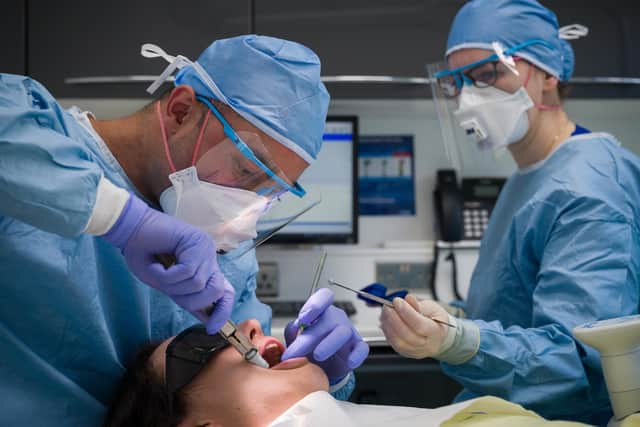Coronavirus in Scotland: 'Crisis' looming as dental visits drop to a quarter of pre-pandemic levels
Fewer visits will result in worse outcomes for patients and higher costs to the NHS, the association said, as early signs of decay and oral cancers are picked up at routine check-ups.
Senior dentists said the full impact of the pandemic on dentistry is yet to be felt, although poor lockdown diets are likely to have increased the risk of problems.
Advertisement
Hide AdAdvertisement
Hide AdThe number of children seen by dentists between May and December was around a quarter of the 2018/19 average, while the number of adults seen from September to November was around a third of previous figures, according to data released by Public Health Scotland.


Inequalities in access between the most and least deprived areas have grown since 2019, particularly in children.
Last year children and adults from the most deprived areas were less likely to have seen their dentist within the past two years than those from the least deprived areas by 73.5 per cent compared to 85.7 per cent of children, and 55.9 per cent compared to 67.1 per cent of adults.
Robert Donald, chair of the British Dental Association’s Scottish Council, said: “These numbers underline the scale of the challenge ahead.
“Millions have missed out on dentistry. Problems that could have been caught early, from decay to oral cancer, have been missed.
“Scotland’s huge oral health inequalities cannot be allowed to widen. Every party heading into May’s election now has a responsibility to set out how they will ensure families across Scotland can get the care they need.”
The pandemic has also caused a sharp drop in the number of young children being registered with a dentist for the first time, with the percentage of 0-2 year-olds registered falling from 47.4 per cent to 33.8 per cent from 2019 to last year.
While some treatments and urgent care continued throughout the pandemic, full NHS treatments were postponed in March and not reinstated until November 1.
A message from the Editor:
Thank you for reading this article. We're more reliant on your support than ever as the shift in consumer habits brought about by coronavirus impacts our advertisers.
If you haven't already, please consider supporting our trusted, fact-checked journalism by taking out a digital subscription.
Comments
Want to join the conversation? Please or to comment on this article.